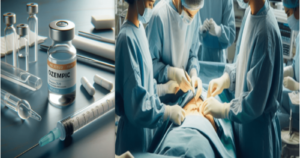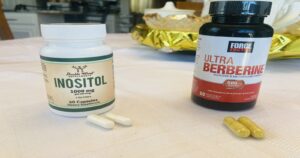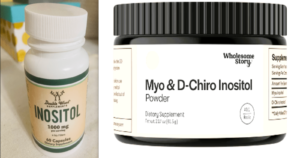Sermorelin is a peptide that encourages stimulant for the pituitary gland that induces the secretion of growth hormone verses Ozempic which is a Semaglutide, a GLP-1 agonist, functions by enhancing insulin secretion, decreasing glucagon release, slowing down gastric emptying, and suppressing appetite.
Sermorelin
Sermorelin is a peptide that functions as a growth hormone-releasing hormone (GHRH). It is used to stimulate the release of growth hormone from the pituitary gland in the brain. Growth hormone plays a crucial role in various physiological processes, including growth, metabolism, and overall well-being.
The primary purpose of Sermorelin is to address growth hormone deficiency in individuals. It is often employed in anti-aging treatments and hormone replacement therapy (HRT). As people age, the production of growth hormone tends to decline, leading to various symptoms such as decreased energy levels, reduced muscle mass, and changes in body composition.
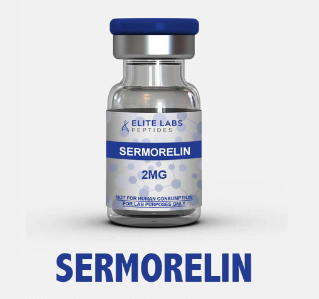
By stimulating the release of growth hormone, Sermorelin aims to counteract these effects and promote overall health and vitality. It is important to note that Sermorelin is not a synthetic growth hormone itself but a peptide that encourages the natural production of growth hormone by the body.
In cases where children experience inadequate growth due to insufficient production of growth hormone by their bodies, this medication may be utilized to enhance the secretion of growth hormone from the pituitary gland.
In addition to its anti-aging benefits, Sermorelin is sometimes used in conjunction with other therapies for specific medical conditions related to growth hormone deficiency. However, the use of Sermorelin should be done under the supervision of a qualified healthcare professional, as improper administration or dosage may lead to adverse effects.
Ozempic
Ozempic is a medication used in the treatment of type 2 diabetes. It belongs to the class of drugs known as GLP-1 receptor agonists. GLP-1 (glucagon-like peptide-1) is a naturally occurring hormone in the body that plays a role in regulating blood sugar levels.
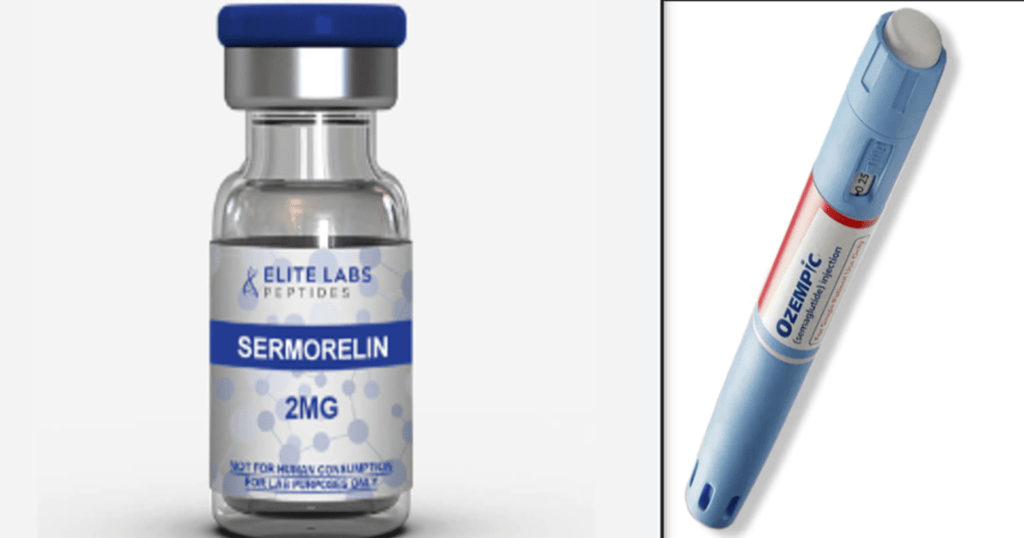
Apart from blood sugar control, Ozempic has been associated with potential cardiovascular benefits. Some studies suggest a reduction in the risk of cardiovascular events in individuals with type 2 diabetes.
In some cases Ozempic, may also have an impact on weight management. Some people may experience weight loss while using this medication. Ozempic tends to suppress Appetite and Slowed Gastric Emptying. Due to the combination of appetite suppression and slowed gastric emptying, individuals using GLP-1 receptor agonists may naturally consume fewer calories. This reduction in caloric intake can contribute to weight loss over time.

How Is Ozempic Effective on weight management/weight loss
- Appetite Regulation: GLP-1 receptor agonists influence the central nervous system to regulate appetite. They can lead to increased feelings of fullness (satiety) and reduced hunger. This effect on appetite control can contribute to weight loss in some individuals.
- Slowed Gastric Emptying: GLP-1 receptor agonists can slow down the emptying of the stomach contents into the small intestine. This delayed gastric emptying can contribute to prolonged feelings of fullness after meals, potentially reducing overall food intake and aiding in weight loss.
- Caloric Intake Reduction: Due to the combination of appetite suppression and slowed gastric emptying, individuals using GLP-1 receptor agonists may naturally consume fewer calories. This reduction in caloric intake can contribute to weight loss over time.
- Impact on Body Composition: In addition to weight loss, GLP-1 receptor agonists may have positive effects on body composition. Some studies suggest a reduction in body fat mass and an increase in lean body mass in individuals using these medications.
- Metabolic Effects: GLP-1 receptor agonists have metabolic effects beyond blood sugar control. They may improve insulin sensitivity, promote glucose utilization, and enhance the body’s ability to burn fat. These metabolic changes can contribute to weight management.
- Individual Variability: It’s important to note that the response to GLP-1 receptor agonists can vary among individuals. While some people may experience significant weight loss, others may have more modest changes or even weight stability. Individual factors such as genetics, lifestyle, and adherence to medication play a role.
- Clinical Studies: Clinical studies evaluating the effects of GLP-1 receptor agonists on weight management have shown promising results. However, the degree of weight loss can vary, and the impact may be influenced by factors such as diet and physical activity.

It’s crucial for individuals using Ozempic or any GLP-1 receptor agonist to discuss their specific health goals and concerns with their healthcare provider. The healthcare provider can provide personalized guidance on the expected effects on weight and overall health based on the individual’s medical history and needs. Regular monitoring and follow-up appointments are essential to assess the medication’s effectiveness and adjust the treatment plan if necessary.
Sermorelin Mechanism & Action vs Ozempic Mechanism & Action


Sermorelin(GHRH) Mechanism & Action
1. Targeting the Pituitary Gland:
Sermorelin primarily acts on the pituitary gland, which is a small gland located at the base of the brain. The pituitary gland plays a crucial role in regulating various physiological processes, including the secretion of growth hormone (GH
2. Mimicking GHRH:
Sermorelin is structurally similar to the naturally occurring GHRH. GHRH is responsible for signaling the pituitary gland to release growth hormone into the bloodstream
3. Induction of Growth Hormone Synthesis and Secretion:
Sermorelin not only stimulates the immediate release of stored growth hormone but also promotes the synthesis of new growth hormone molecules within the pituitary gland.
4. Physiological Effects:
The elevated levels of growth hormone have various physiological effects on the body, including,
Stimulation of growth and development, particularly in bone and cartilage.
Regulation of metabolism, including the breakdown of fats and the promotion of lean muscle mass.
Influence on protein synthesis and cellular repair processes.
5. Pulsatile Release:
It’s important to note that Sermorelin promotes a pulsatile release of growth hormone, resembling the natural pattern observed in individuals with intact pituitary function. This is in contrast to continuous, non-pulsatile administration of synthetic growth hormone.
6. Feedback Mechanisms:
The body has feedback mechanisms to regulate growth hormone levels. Elevated levels of growth hormone can signal the body to reduce the release of GHRH and, consequently, growth hormone. This helps maintain a balance in the endocrine system.
Ozempic (GLP-1) Mechanism & Action
1. GLP-1 Receptor Stimulation:
Ozempic stimulates the GLP-1 receptor, which is primarily found on pancreatic beta cells. GLP-1 is a natural hormone released from the intestine in response to food intake.
2. Increased Insulin Release:
Activation of the GLP-1 receptor by Ozempic leads to an increase in insulin secretion from pancreatic beta cells. Insulin is a hormone that helps cells take up glucose from the bloodstream, thereby lowering blood sugar levels.
3. Reduced Glucagon Secretion:
Glucagon is another hormone produced by pancreatic alpha cells that raises blood sugar levels by promoting the release of glucose from the liver.
Ozempic inhibits the secretion of glucagon, contributing to a reduction in blood glucose levels.
4. Slowed Gastric Emptying:
Ozempic also affects the digestive system by slowing down gastric emptying. This means that food moves more slowly from the stomach to the small intestine.
Slowed gastric emptying helps to regulate the rate at which glucose is absorbed from the digestive tract into the bloodstream, preventing rapid spikes in blood sugar levels
5. Appetite Regulation:
In addition to its effects on insulin and glucagon, GLP-1 receptor agonists like Ozempic have been associated with appetite regulation. They may promote a feeling of fullness and satiety, helping individuals manage their food intake.
Ozempic’s mechanism of action involves stimulating the GLP-1 receptor, leading to increased insulin release, reduced glucagon secretion, slowed gastric emptying, and potential appetite regulation. These combined effects contribute to better blood sugar control in individuals with type 2 diabetes.
Advantages of Sermorelin vs Ozempic
| Sermorelin | Ozempic |
|---|---|
| Stimulates natural growth hormone | Type 2 diabetes treatment |
| Stimulates pituitary gland | Mimics the action of GLP-1 |
| Subcutaneous injection | Subcutaneous injection |
| For Individuals with Growth Hormone Deficiency | For Patients with Type 2 Diabetes |
| Promotes muscle growth, Metabolism stimulation, improve sleep quality | Lowers blood sugar levels, aid in weight loss |
| May increase energy levels | Helps reduce risk of cardiovascular events |
| Dose not cause Diarrhea like Ozempic, but cause headache and nausea | Cause Nausea and Diarrhea but dose not cause headache |
| Less expensive | Generally more expensive |
Disadvantages of Ozempic vs Sermorelin
Ozempic

1. Gastrointestinal Side Effects: Nausea, vomiting, diarrhea, and abdominal pain are common side effects of Ozempic. These symptoms may occur especially at the beginning of treatment and may lessen over time.
2. Hypoglycemia Risk: While less common than with some other diabetes medications, Ozempic can still lower blood sugar levels, potentially leading to hypoglycemia, especially if used in combination with other glucose-lowering medications.
3. Injection Site Reactions: Some people may experience redness, itching, or discomfort at the injection site. Rotating injection sites and proper injection technique can help minimize this.
4. Thyroid Tumors: In animal studies, semaglutide, the active ingredient in Ozempic, has been associated with thyroid tumors. While this risk has not been definitively established in humans, it is a potential concern, particularly for long-term use.
5. Pancreatitis: There have been reports of pancreatitis (inflammation of the pancreas) associated with the use of GLP-1 receptor agonists like Ozempic. Patients should be monitored for signs and symptoms of pancreatitis, such as severe abdominal pain, and treatment should be discontinued if pancreatitis is suspected.
6. Renal Impairment: Patients with renal impairment may require dosage adjustments or closer monitoring when taking Ozempic, as the drug is eliminated primarily via the kidneys.
7. Allergic Reactions: Although rare, some individuals may experience allergic reactions to Ozempic, which can manifest as rash, itching, or difficulty breathing. Immediate medical attention is necessary if such symptoms occur.
8. Cost: As with many newer medications, Ozempic can be expensive, and access may be limited for some patients depending on their insurance coverage or financial situation.
Sermorelin
1. Cost: Sermorelin therapy can be expensive, especially since it’s often not covered by insurance.
2. Daily Injections: Sermorelin typically requires daily subcutaneous injections, which can be inconvenient for some individuals.
3. Limited Effectiveness: While Sermorelin can stimulate natural growth hormone production, its effectiveness may vary from person to person, and it might not yield significant results for everyone.
4. Side Effects: Like any medication, Sermorelin can cause side effects such as injection site reactions, headache, dizziness, and nausea.
5. Regulatory Status: Sermorelin is regulated as a prescription drug and may not be readily available or legal in all countries or regions without a prescription.
6. Dependency: Long-term use of Sermorelin may lead to dependency on the medication to maintain growth hormone levels, and discontinuing treatment could result in a decrease in growth hormone production.
Health Benefits of Sermorelin & Ozempic

Sermorelin Health benefits
1. Growth Hormone Deficiency: Sermorelin is often prescribed to individuals with a deficiency in growth hormone. This deficiency may occur in children or adults and can lead to growth and developmental issues.
2. Anti-Aging and Wellness: Some people use Sermorelin as part of anti-aging and wellness programs. It is believed that increasing growth hormone levels can have positive effects on muscle mass, energy levels, and overall well-being.
3. Muscle Growth and Recovery: Athletes and bodybuilders may use Sermorelin to enhance muscle growth and recovery. Increased levels of growth hormone can contribute to the development of lean muscle mass.
4. Weight Loss Support: Sermorelin is sometimes included in weight loss programs. Growth hormone is involved in metabolism, and its stimulation may aid in fat loss.
5. Improved Sleep: Growth hormone plays a role in sleep regulation. Some individuals may use Sermorelin to improve sleep quality and address sleep-related issues.
6. Bone Health: Growth hormone has effects on bone density and strength. Sermorelin may be prescribed to address issues related to bone health.
7. Cognitive Function: There is some research suggesting that growth hormone may have positive effects on cognitive function. Sermorelin may be used in certain cases to support cognitive health.
8. Recovery from Injuries: Athletes or individuals recovering from injuries may use Sermorelin to support the healing and recovery process.
Health Benefits of Ozempic
- Type 2 Diabetes Management: Ozempic is primarily prescribed to adults with type 2 diabetes to help lower blood sugar levels. It is often used when other oral diabetes medications have not provided adequate control.

2. Blood Sugar Control: Ozempic helps control blood sugar levels by stimulating the release of insulin from the pancreas when blood sugar is elevated and by reducing the amount of glucose produced by the liver.
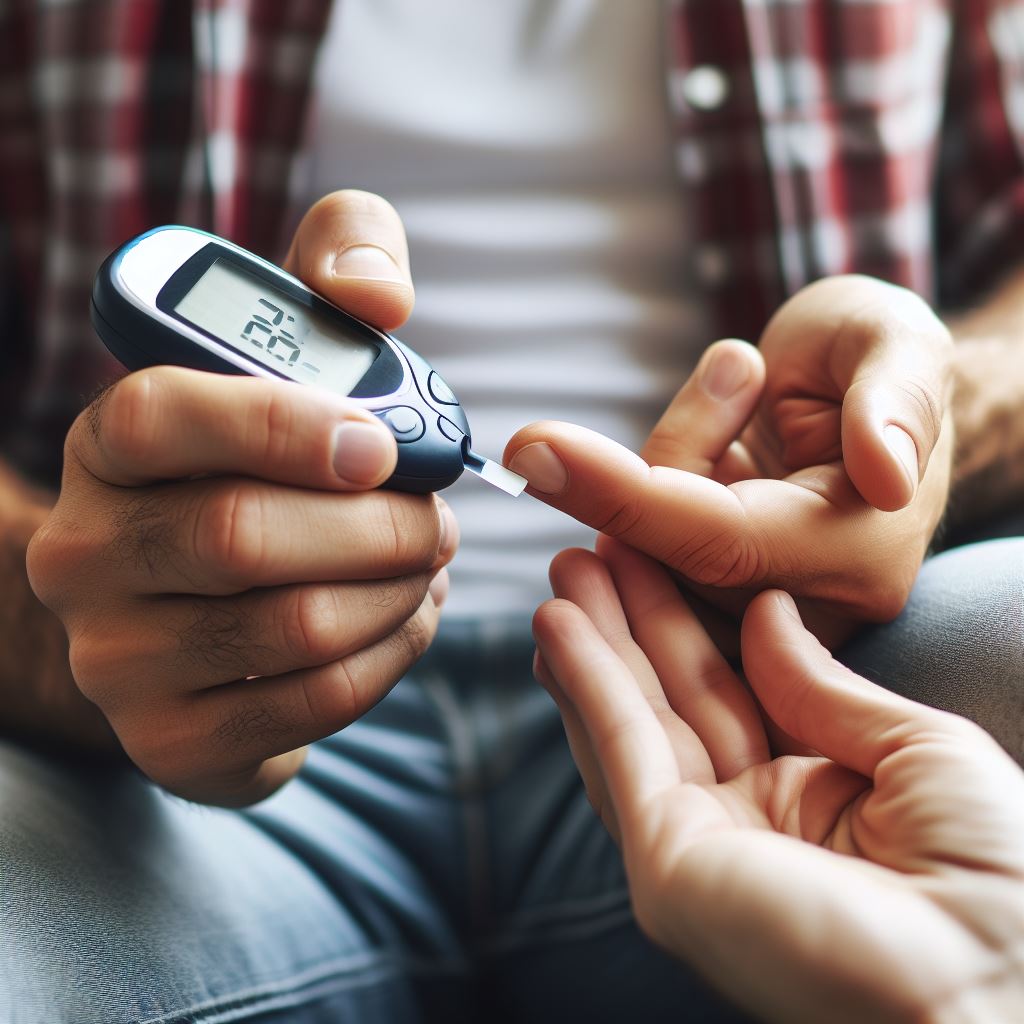
3. Weight Management: Some people with type 2 diabetes may experience weight loss or weight maintenance as a side effect of Ozempic. This can be beneficial for those who are overweight or obese.
4. Cardiovascular Risk Reduction: In addition to its blood sugar-lowering effects, Ozempic has been shown to have cardiovascular benefits. It may reduce the risk of major cardiovascular events in individuals with type 2 diabetes who have established cardiovascular disease.
5. Incretin Mimetic Effects: Ozempic, like other GLP-1 receptor agonists, has incretin mimetic effects. This means it enhances the body’s response to meals, leading to improved insulin release, reduced glucagon secretion, and slower emptying of the stomach.
6. Once-Weekly Administration: Ozempic is administered once weekly via subcutaneous injection. Its long duration of action allows for a convenient dosing schedule compared to some other diabetes medications.
7. A1c Reduction: Ozempic is effective in reducing glycated hemoglobin (A1c) levels, which is an indicator of average blood sugar levels over time. Lowering A1c levels is a key goal in diabetes management.
8. Improved Beta Cell Function: Ozempic may help improve beta cell function in the pancreas, supporting the body’s ability to produce and release insulin.
Different methods of Sermorelin
- Oral Method

Sermorelin therapy via oral administration is a widely embraced approach for delivering the growth hormone-releasing peptide. This method involves the consumption of tablets containing a variant of Sermorelin.
An advantage of this administration route is its convenience and seamless integration into daily routines. Oral Sermorelin tablets are typically available in easy-to-swallow forms that can be taken with or without food.
Unlike injected forms, pills eliminate the need for injections, offering a potentially safer and more convenient alternative for individuals seeking Sermorelin. However, it’s important to note that the bioavailability of oral Sermorelin is compromised due to the loss of components during the digestive process.
2. Injections

Sermorelin injections involve administering a single dose of Sermorelin directly into a muscle or under the skin, typically in the thigh, abdomen, arm, or buttocks. These treatments can be self-administered at home, offering a convenient and effective option.
While this method provides ease of use, some individuals may encounter irritation and pain at the injection site, which may not be suitable for those with a needle aversion.
Each administration method of Sermorelin comes with its own set of advantages and disadvantages. It is crucial to consult with your doctor to determine the most suitable method based on your specific needs and health goals.
3. Nasal Spray
The nasal spray emerges as a noninvasive and convenient means of delivering Sermorelin. This method allows for the effortless daily administration of Sermorelin, with the active ingredients swiftly absorbed into the bloodstream, resulting in faster and more efficient outcomes.
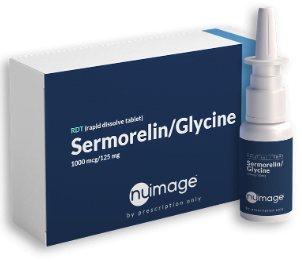
Unlike methods involving needles or syringes, the nasal spray eliminates the risk of infection or other health concerns. Its primary advantage lies in the rapid absorption and user-friendly administration. However, it’s important to note that nasal sprays may sometimes cause a burning sensation or irritation in the nose.
Essential awareness of potential Side Effects of Sermorelin
It is important to be aware of potential side effects when taking medication. While not everyone may experience these effects, it’s crucial to consult your doctor if any of the following occur:
More Common:
- Pain, redness, or swelling at the injection site
Rare:
- Itching
- Trouble swallowing
Some side effects may be less severe and may not require immediate medical attention. These effects may diminish as your body adapts to the medication. Your healthcare professional can provide guidance on preventing or reducing these side effects. Contact your healthcare provider if any of the following persist, become bothersome, or if you have questions:
Rare:
- Dizziness
- Flushing
- Headache
- Sleepiness
- Trouble sitting still
It’s essential to note that there may be other side effects not mentioned here. If you observe any unlisted effects, consult your healthcare professional. For medical advice regarding side effects, contact your doctor.
What is the best way to take Sermorelin?
Subcutaneous is the best way to take Sermorelin.
Subcutaneous administration involves injecting the medication into the fatty tissue just beneath the skin.
Subcutaneous injections are a common and relatively easy method for self-administration. This route allows for the gradual absorption of the medication into the bloodstream.
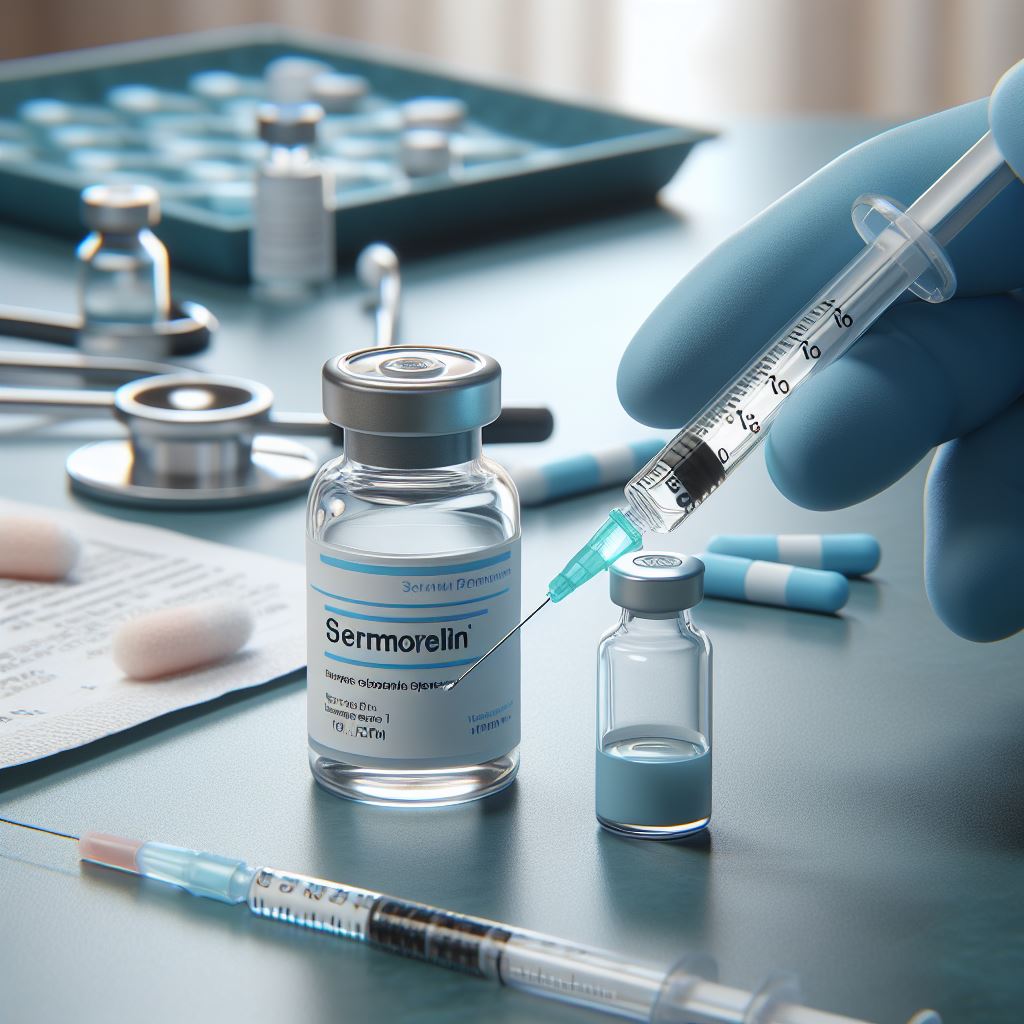
Warnings & considerations when using Sermorelin
- Consultation with Healthcare Provider: Before starting Sermorelin therapy, consult with a qualified healthcare provider, preferably one with experience in hormone replacement therapy.
- Underlying Health Conditions: Inform your healthcare provider about any pre-existing medical conditions, especially if you have a history of cancer, diabetes, or any other endocrine disorders.
- Potential Side Effects: Understand the potential side effects of Sermorelin therapy, which may include headaches, flushing, dizziness, nausea, and injection site reactions. Monitor for any adverse reactions and report them to your healthcare provider.
- Dosage and Administration: Follow the prescribed dosage and administration instructions provided by your healthcare provider. Do not adjust the dosage without consulting them first.
- Monitoring: Regularly monitor hormone levels and overall health while undergoing Sermorelin therapy. Your healthcare provider may order blood tests to assess hormone levels and check for any adverse effects.
- Long-term Effects: The long-term effects of Sermorelin therapy are not fully understood. Discuss the potential risks and benefits of long-term use with your healthcare provider.
- Interactions: Sermorelin may interact with other medications or supplements. Inform your healthcare provider about any medications, supplements, or herbal remedies you are currently taking.
- Cost Considerations: Sermorelin therapy can be costly, and insurance coverage may vary. Consider the financial implications of long-term therapy.
- Legal Considerations: Be aware of the legal status of Sermorelin in your country or region. In some places, it may be classified as a prescription medication and require a doctor’s prescription for use.
- Alternative Therapies: Explore alternative therapies and lifestyle changes that may help support natural growth hormone production, such as adequate sleep, regular exercise, and a healthy diet.
- Patient Education: Educate yourself about Sermorelin therapy, including its mechanism of action, potential benefits, and risks. Being informed will help you make informed decisions about your healthcare.
Common side effects of Ozempic

- Nausea: Some people may experience nausea when using Ozempic.
- Diarrhea: Diarrhea is another potential side effect of Ozempic.
- Stomach (Abdominal) Pain: Abdominal pain may occur in some individuals using this medication.
- Vomiting: Vomiting is listed as a possible side effect of Ozempic.
- Constipation: Constipation is another gastrointestinal side effect that may be associated with this medication.
- Weight loss
Warning signs to look for when taking Ozempic
1. Some people may develop immunity to Ozempic. In clinical trials, around 1% of individuals using Ozempic developed antibodies against the drug, potentially leading to a reduced effectiveness of the medication over time.
2. Severe gastroparesis refers to a condition where the stomach experiences significant slowing or complete cessation of food movement, leading to a paralyzed stomach. Severe vomiting and abdominal pain from taking Ozempic can lead to hospitalization
3. Thyroid C-cell tumors, the FDA cautions that the prescribing information for Semaglutide includes a boxed warning aimed at informing healthcare professionals and patients about the potential risk of thyroid C-cell tumors. It is advised not to administer Semaglutide to patients with a personal or family history of medullary thyroid carcinoma or those with the rare condition known as Multiple Endocrine Neoplasia syndrome type 2 (MEN 2).
4. Signs of Kidney Problems & Gallbladder disease : Acute kidney injury, changes in the amount of urine. Acute gallbladder disease, Pancreatitis.
- Nausea/vomiting that doesn’t stop.
- Severe stomach/abdominal pain.
5. Vision Changes: Decreased/blurred vision, Diabetic retinopathy, Allergic reactions, and Hypoglycemia (when used with insulin or sulfonylurea).
6. Fecal impaction, as of October 2023 The U.S. Food and Drug Administration has added ileus, or blocked intestines, to the list of possible adverse reactions to the diabetes medication Ozempic.
7. Hypoglycemia (Low Blood Sugar):
though semaglutide by itself usually does not cause low blood sugar (hypoglycemia), it may occur if this drug is prescribed with other diabetes medications.
It’s important to talk with your doctor or pharmacist about whether the dose(s) of your other diabetes medication(s) needs to be lowered.
8. Suicidal thoughts or actions: on January 11th 2024 the FDA issued a warning that evaluation has not found evidence that use of these glucagon-like peptide-1 receptor agonists (GLP-1 RAs medicines causes suicidal thoughts or actions.
How many pounds can I anticipate losing with Ozempic?
Based on findings from randomized controlled trials, Ozempic has been shown to contribute to an average weight loss of approximately 1kg or 1.1% of body weight after one month and around 2kg or 2.2% of body weight after two months. However, individual results may vary, with some experiencing faster weight loss and others taking longer.
Semaglutide, the active ingredient in Ozempic, works by reducing appetite and hunger, leading to a decrease in calorie intake. This effect is typically immediate. It’s worth noting that the initial noticeable reduction in hunger may diminish after 4-5 days post-injection during the first month of using Ozempic.
For Ozempic to reach a steady state in the body, where its levels remain consistent, it may take 4-5 weeks. During this period, the drug’s concentration in the body stabilizes, avoiding spikes and falls.
Different types/methods of Ozempic
1. Subcutaneous injection, this means that it is injected under the skin. Ozempic injections are typically given once a week.

2. Pill (also known as Rybelsus), Ozempic is a Semaglutide and can also be found in pill form.
My experiences from working with patients and co-workers who are currently on Ozempic who had switch from the injections to the pill, admits they were less hungry on the injections and lose more weight while on the injection.
They stated the injection did cause a lot more diarrhea and nausea.
When is the best time to take Ozempic?
The specific time of day to take Ozempic (semaglutide) can vary among individuals, and the optimal time may be determined by your healthcare provider based on your individual needs and lifestyle. However, in general, Ozempic is often recommended to be taken at the same time each week to establish a routine. The injection is typically administered once a week.
It’s common for people to take Ozempic in the morning or evening, depending on what suits their daily schedule and preferences. Some individuals may find it more convenient to take it in the morning to align with their daily routine, while others may prefer the evening.
It’s important to follow your healthcare provider’s instructions and the prescribed dosing schedule. If you have any questions or concerns about the timing of your Ozempic injections, it’s advisable to discuss them with your healthcare professional. They can provide personalized guidance based on your specific health conditions and lifestyle.
Resources
Experiences with individuals on there drugs.
https://www.drugwatch.com/drugs/ozempic/side-effects/
https://www.secondnature.io/us/guides/lifestyle/weight-loss-one-month-ozempic
https://www.ncbi.nlm.nih.gov/pmc/articles/PMC2699646/


